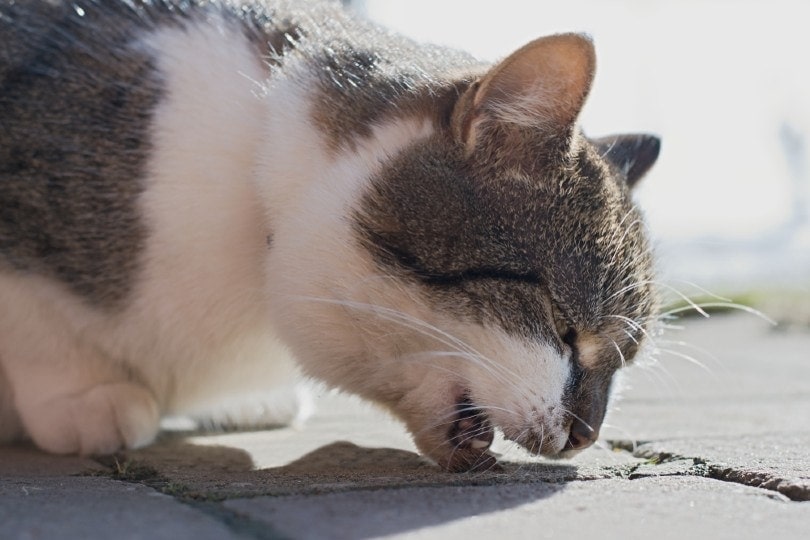When Were Cats Brought to America? History & FAQs

Updated on
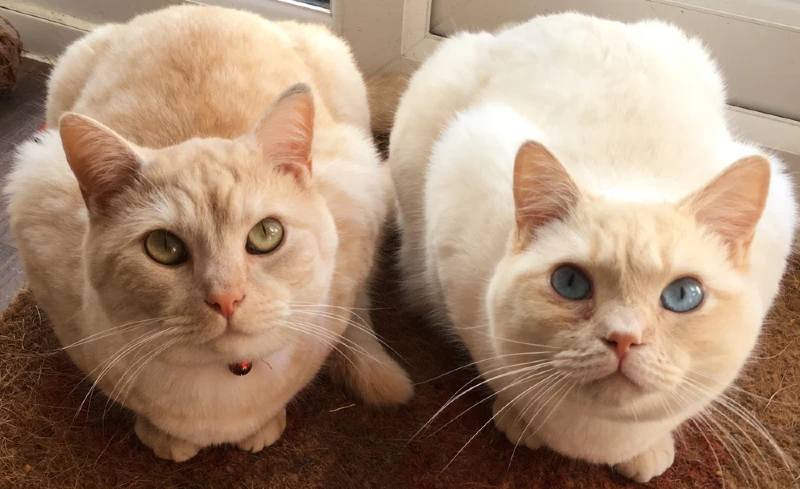
These days, cats are everywhere. We see them in movies, video games, commercials, and social media. Cats are more popular than Marvel heroes, celebrities, and presidents. We simply can’t get enough of them! Now, this might sound a bit shocking, but they haven’t always been in the States. Kitties were brought to the country back in 1492 by Christopher Columbus.
That’s right: the legendary explorer that discovered the New World is also recognized as the man that brought cats to the US. But wait—weren’t there any felines on the American continent before that? Why were cats welcome guests on sailing ships? And how many feline pets are there in the States today? Let’s find the answers together!
800,000 Years Ago: Prehistoric Cats
Before we ever stepped foot on American land, it used to be inhabited by saber-toothed tigers. We’re talking about 67 different species, all of them belonging to the Felidae family. These big, mighty creatures had been living in North America about 800,000 years ago but went extinct 8,000 to 10,000 years ago.1 That’s quite a span!
The arrival of our kind (the humans) also played a major role in this. As for jaguars, they used to live in the United States for many centuries. However, today, only a few are left in the States (in Arizona), as the species was extirpated from the country back in the 20th century. The same goes for cougars, although their population is slightly higher. But what about domestic cats? Read on to find out!
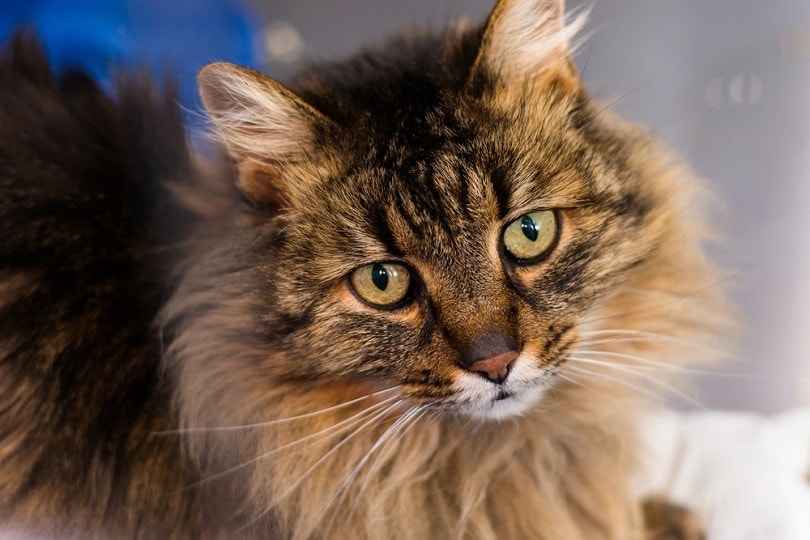
1492: Columbus and the Discovery of America
Christopher Columbus needs no introduction. He’s largely recognized as the voyager that discovered the New World. However, Columbus wasn’t the first explorer from Europe to find the Americas. In 1492, he sailed to the Bahamas archipelago and put the Dominican Republic and Haiti on European maps. Later, on his subsequent journeys, he traveled to South and Central America.
So, what does this have to do with cats? Well, it is believed that the famed European explorer had a cat aboard his ship, Santa Maria. And it wasn’t just a cute pet, either. The cat played a very important role and was considered a part of the crew.
The 16th Century: Cats and Early Colonists
During the 15th and 16th centuries, before planes came around, ships were the only way for European nations to travel to new continents. Sea voyages were quite stressful, though. The sailors had to survive for months while navigating through the ocean. That’s why they only had oats and grains on the menu: these foods can last for months and are very easy to cook.
The problem is—grains are a big magnet for rodents. So, pretty much every single ship had mice and rats ravaging the precious reserves. Now, for a human, catching a rodent is no small task. But for a cat, it’s child’s play! It was a mutually beneficial friendship. The cats feasted on the critters while the humans got to enjoy their grains! And, naturally, many felines stayed in America at the end of their journeys.
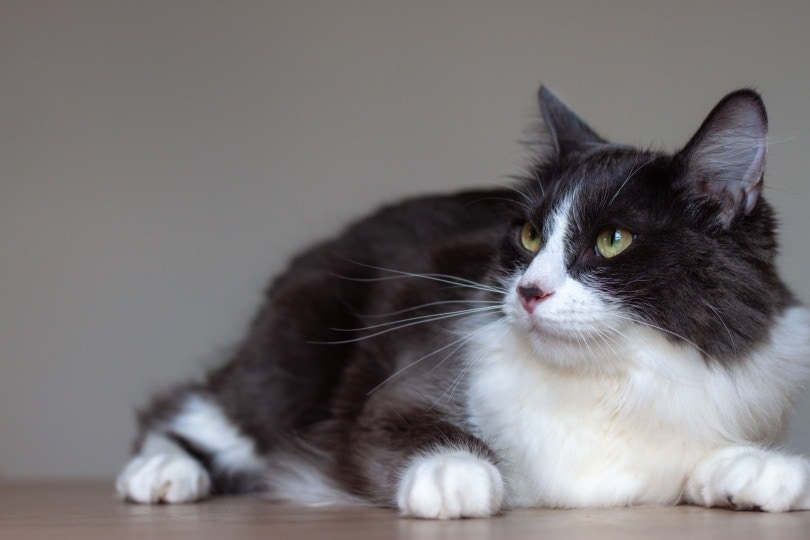
1866: The Anti-Cruelty Law and Beyond
For many years, brutality against cats and dogs alike wasn’t punishable by law. Fortunately, the ASPCA organization was founded in 1866, and it introduced new anti-cruelty laws almost immediately (in 1870). It took the country quite some time to accept the new legislation, but by the early 20th century, most American states had officially adopted these changes.
In 1889, when the American Humane Education Society was established, life became a lot easier for animals in the US. In the mid-1950s, shelters and rescue centers for stray cats and dogs began to emerge. But sadly, most strays were simply euthanized, not treated. The good news is—since the 1970s, instead of catching and killing homeless animals, veterinarians have been sterilizing them.
Early-20th Century: Cats as House Pets
In the late 19th century, the American Postal Service was using cats as employees for official business. Around that same time, regular US citizens were starting to domesticate these lovely creatures to serve as mousers. In 1895, Madison Square Garden became the stage for the first-ever cat show. After the States and the Allies prevailed in the First World War, cats became even more popular in America.
However, there weren’t any restrictions for these freedom-loving mousers. The cats could come in and go as they pleased. Yes, 100 years ago, very few felines were “trapped” indoors by their owners. Even presidents like Woodrow Wilson and Calvin Coolidge (big fans of cats) didn’t have any strict regulations for their pets.

1947: The Invention of Cat Litter, a Huge Catalyst
You might not give this much thought, but back in the 50s, the discovery of cat litter was a big revolution in the pet parenting game. Before that, people were using a piece of newspaper or pans filled with dirt, but there was nothing fun about that. So, in the 60s, when the Tidy Cats brand made its easy-to-use and cheap litter boxes, the number of domesticated cats went through the roof!
In the 20th century, only a small percentage of Americans could afford to buy fresh meat for their pets. Thankfully, that all changed with the invention of affordable refrigerators with fridges and canned food. Spaying and neutering were introduced in the 30s, and it also aided in the popularization of cats as pets. That said, they are still predators at heart, although they don’t show it much.
The 21st Century: Breaking the Internet
It’s safe to say that cats took over the world the second Facebook, Instagram, and TikTok came around. It took us a very long time to start treating felines as companions, not working animals. But, these days, cats are more popular than they’ve ever been, and social media plays a big role in that.
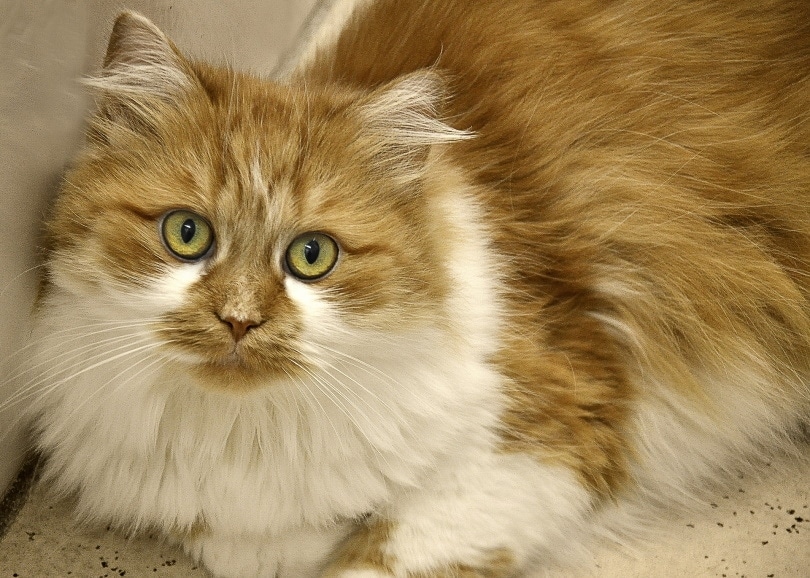
Cats and Humans: When Did It All Begin?
Domestic cats have been living side by side with us for 10,000–12,000 years. For many centuries, cats were wild animals, but that changed in the Fertile Crescent when our ancestors started to build communities and settle in small towns. Farming the lands allowed them to store grains and survive the harsh winter months while stocked on food.
The settlers couldn’t deal with the rodents, but cats helped keep the food safe by killing the gnawers. No other animal on the planet was nearly as effective at eliminating the rat/mouse threat. As a way to say thank you, humans offered the cats shelter, and that’s how this beautiful relationship started! This is interesting: there’s a burial site in Cyprus that proves cats have been domesticated for at least 9,500 years.
How Many Americans Own Cats?
Back in 1988, only 56% of US citizens owned a pet. Today, that number has reached 70% or 90+ million households. Now, dogs are still America’s favorite pets, but cats are incredibly popular as well: 69 versus 45 million owners. In other words, 44.5% of pet owners in the United States are dog people, and only 29% are cat fans. The UK and Australia have roughly the same preferences.
But, if we take a look at social media, we’ll see that cats have the upper hand. They’re leading in 91 countries, including Russia, China, and Canada; dogs have taken over 76 nations. Also, 76% of cat parents consider them to be a part of their family, not just domestic animals. That said, more than half of the cat owners (56%) only have one feline in the house.
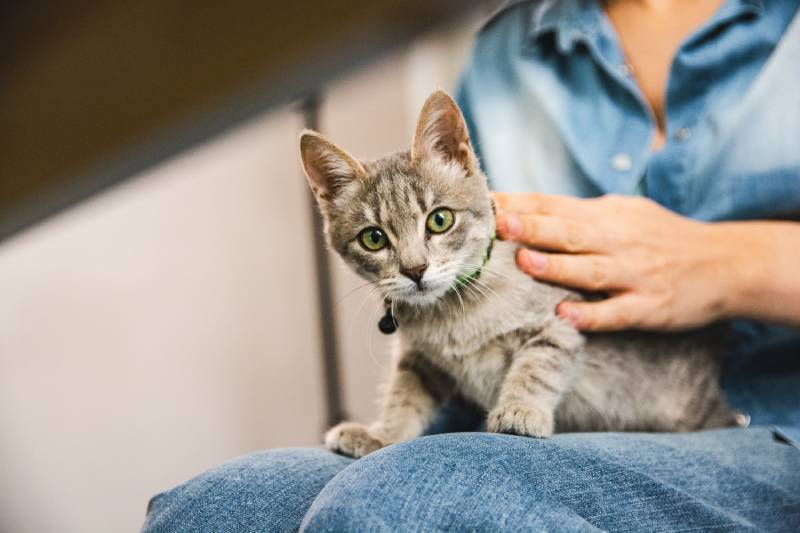
How Much Do We Spend on Them?
Insurance, veterinary care, vaccinations, food, grooming—none of that comes for free! But, in all fairness, it doesn’t cost a fortune to keep our fluffy buds well-fed, healthy, and safe. On average, it costs $30 to insure a cat. Decent-quality food will set you back $310 a year, while vet visits usually come in at around $250. As for toys, most Americans spend $50 on them.
Grooming is the least expensive treat (only $20). All in all, annually, we spend $650 on our furballs. For comparison, dogs cost almost 50% more, $920. And one more thing: 43% of cat parents get their pets from stores, while 40% prefer to find them at local rescue centers or shelters.
Final Thoughts
Cats are majestic creatures. It takes one look to fall in love with their adorable personalities. They give us comfort, joy, and exclusive petting rights. But cats haven’t always been in America. Felines were brought to this great country on cargo ships by colonists from many centuries ago. It didn’t take them a long time to become America’s favorite pets, though.
There are over 50 million domestic cats registered in the States, and the numbers keep rising. Cats have a huge impact on our lives, and while they’re not quite as popular as dogs, kitties do have a special place in our hearts. And after traveling thousands of miles across the ocean, they are here to stay!
Featured Image Credit: mattjackson83, Shutterstock


